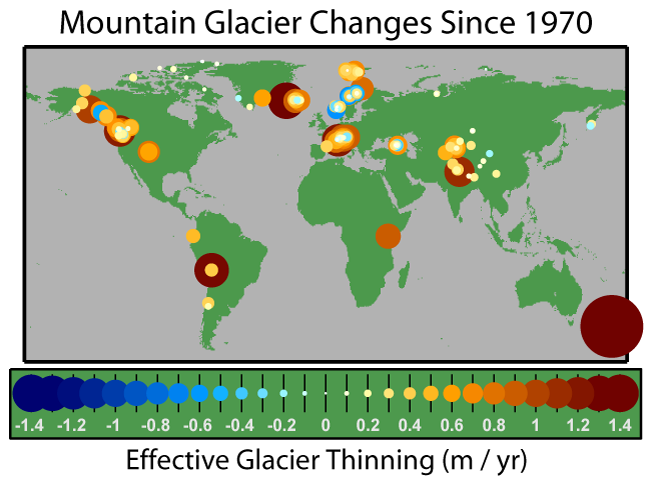ファイル:Glacier Mass Balance Map.png
表示
Glacier_Mass_Balance_Map.png (650 × 477 ピクセル、ファイルサイズ: 75キロバイト、MIME タイプ: image/png)
ファイルの履歴
過去の版のファイルを表示するには、その版の日時をクリックしてください。
| 日付と時刻 | サムネイル | 寸法 | 利用者 | コメント | |
|---|---|---|---|---|---|
| 現在の版 | 2016年10月2日 (日) 15:56 |  | 650 × 477 (75キロバイト) | Cmdrjameson | Compressed with pngout. Reduced by 33kB (30% decrease). |
| 2006年4月10日 (月) 06:48 |  | 650 × 477 (108キロバイト) | Pflatau | == Summary == The effective rate of change in glacier thickness, also known as the glaciological mass balance, is a measure of the average change in a glacier's thickness after correcting for changes in density associated with the compaction o |
ファイルの使用状況
以下のページがこのファイルを使用しています:
グローバルなファイル使用状況
以下に挙げる他のウィキがこの画像を使っています:
- ar.wikipedia.org での使用状況
- cs.wikipedia.org での使用状況
- de.wikipedia.org での使用状況
- en.wikipedia.org での使用状況
- User:Dragons flight/Images
- Holocene glacial retreat
- Glacier mass balance
- Retreat of glaciers since 1850
- Talk:Retreat of glaciers since 1850/Archive 2
- Wikipedia:Reference desk/Archives/Science/2006 September 26
- Portal:Climate change/Selected panorama
- Portal:Climate change/Selected panorama/2
- User:Ctello2/sandbox
- es.wikipedia.org での使用状況
- eu.wikipedia.org での使用状況
- fi.wikipedia.org での使用状況
- fr.wikipedia.org での使用状況
- gl.wikipedia.org での使用状況
- gu.wikipedia.org での使用状況
- hi.wikipedia.org での使用状況
- hr.wikipedia.org での使用状況
- hu.wikipedia.org での使用状況
- hy.wikipedia.org での使用状況
- id.wikipedia.org での使用状況
- it.wikipedia.org での使用状況
- nl.wikipedia.org での使用状況
- pl.wikipedia.org での使用状況
- ru.wikipedia.org での使用状況
- sh.wikipedia.org での使用状況
- sr.wikipedia.org での使用状況
- sw.wikipedia.org での使用状況
- ta.wikipedia.org での使用状況
- tt.wikipedia.org での使用状況
- vi.wikipedia.org での使用状況
- zh.wikipedia.org での使用状況



